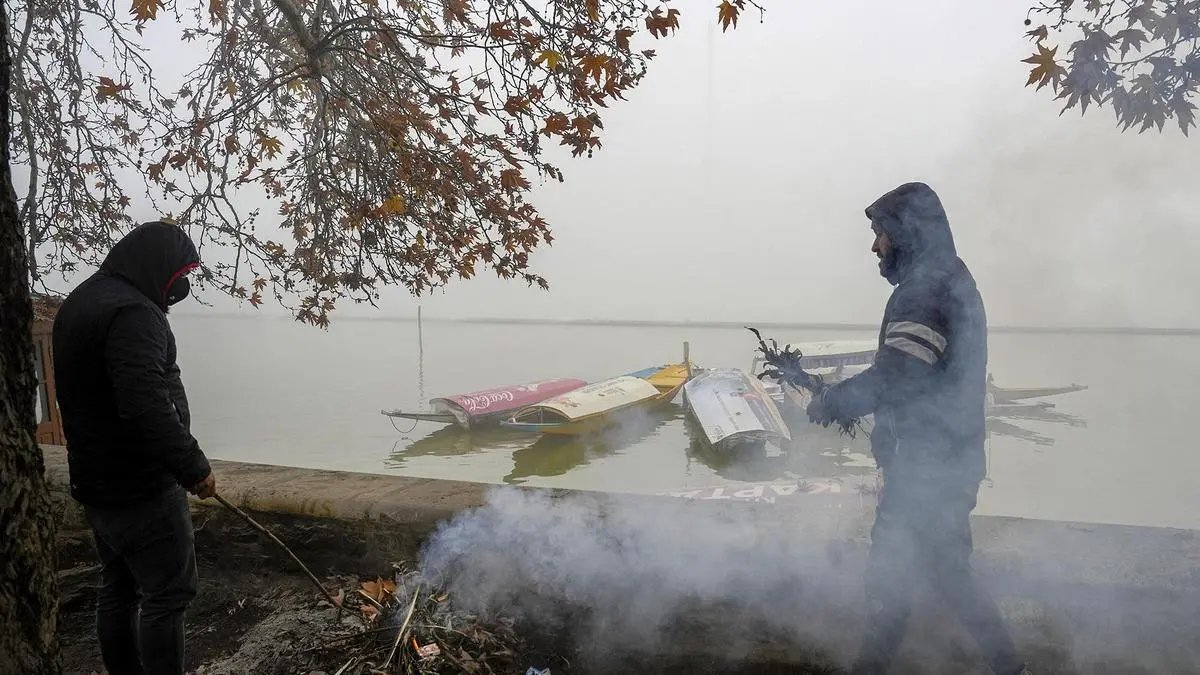Autumn orchard fires choke Kashmir; experts call for sustainable alternatives

As October arrives, thick plumes of smoke rise above Kashmir’s vast apple orchards as farmers burn abscised leaves and twigs. The coils of smoke that blanket the region significantly reduce air quality, contributing to seasonal pollution and posing health risks to residents.
Experts say biomass burning is a major contributor to fine particulate matter (PM2.5) levels in the Valley, particularly in October and November. They suggest that farmers must adopt sustainable methods. such as composting and reintroducing sheep grazing, to help manage waste and naturally enrich soil
“Burning of pruned twigs and fallen leaves during autumn significantly worsens air quality in the valley and causes temperature inversion,” said Arshid Jehangir, Assistant Professor at the School of Earth and Environmental Science, University of Kashmir.
Temperature inversion — a weather phenomenon where a layer of warm air traps cooler air near the ground — prevents pollutants from dispersing, further deteriorating air quality. Studies carried out by researchers over the last few years suggest that air quality significantly degrades from October to January, Jehangir said.
“The average PM2.5 concentration in the valley exceeds 100 micrograms per cubic metre during the winter months,” the expert said. The level is considered severe by both the World Health Organization’s (WHO) and India’s air quality standards.
In 2017, the WHO global urban air pollution database ranked Srinagar as the world’s tenth most polluted city.
A senior pulmonologist in the Valley said there has been a noticeable rise in respiratory illnesses during winter. About 10,000 people die every year in Jammu & Kashmir from diseases linked to air pollution, according to an observation made by Parvaiz Ahmad Koul, former Director of the Sher-e-Kashmir Institute of Medical Sciences (SKIMS), in 2023. He made the remarks during the launch of the Doctors for Clean Air and Climate Action J&K chapter.
Farmers burn leaves and twigs each winter while pruning their orchards to prepare for the next season. The charred residue is often used to make charcoal, which helps them stay warm during the harsh winter months when night temperatures can drop to minus 10 degrees Celsius.
Traditional practice
“It is a traditional practice here. The charcoal is used in kangris (fire pots) to keep people warm during winter,” said Riyaz Ahmad, a farmer.
Tariq Rasool, an Associate Professor at Sher-e-Kashmir University of Agricultural Sciences and Technology (SKUAST), said the routine burning of orchard debris damages the soil’s ecosystem by destroying microorganisms vital for its health.
“Farmers must adopt sustainable methods, such as composting and reintroducing sheep grazing, which help manage waste and naturally enrich the soil, particularly in orchards with higher branches,” he said.
Published on October 28, 2025



